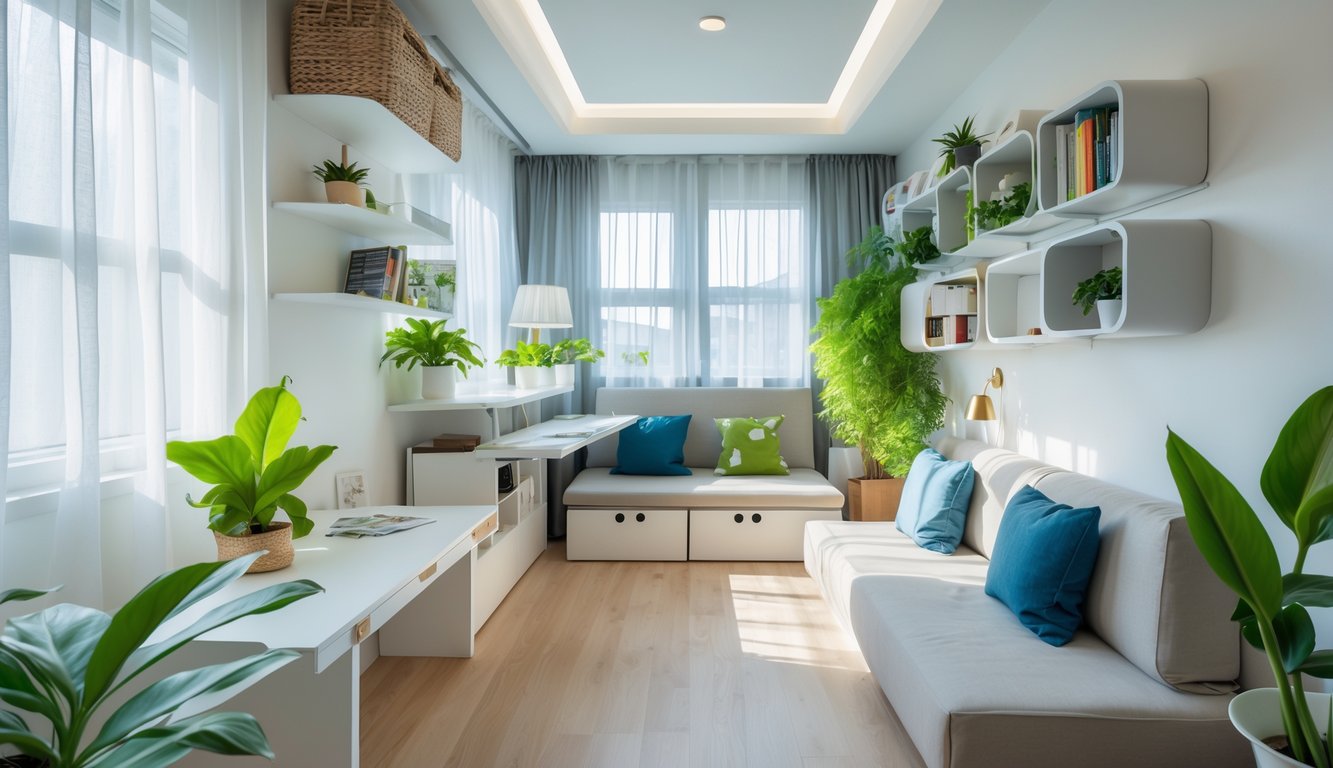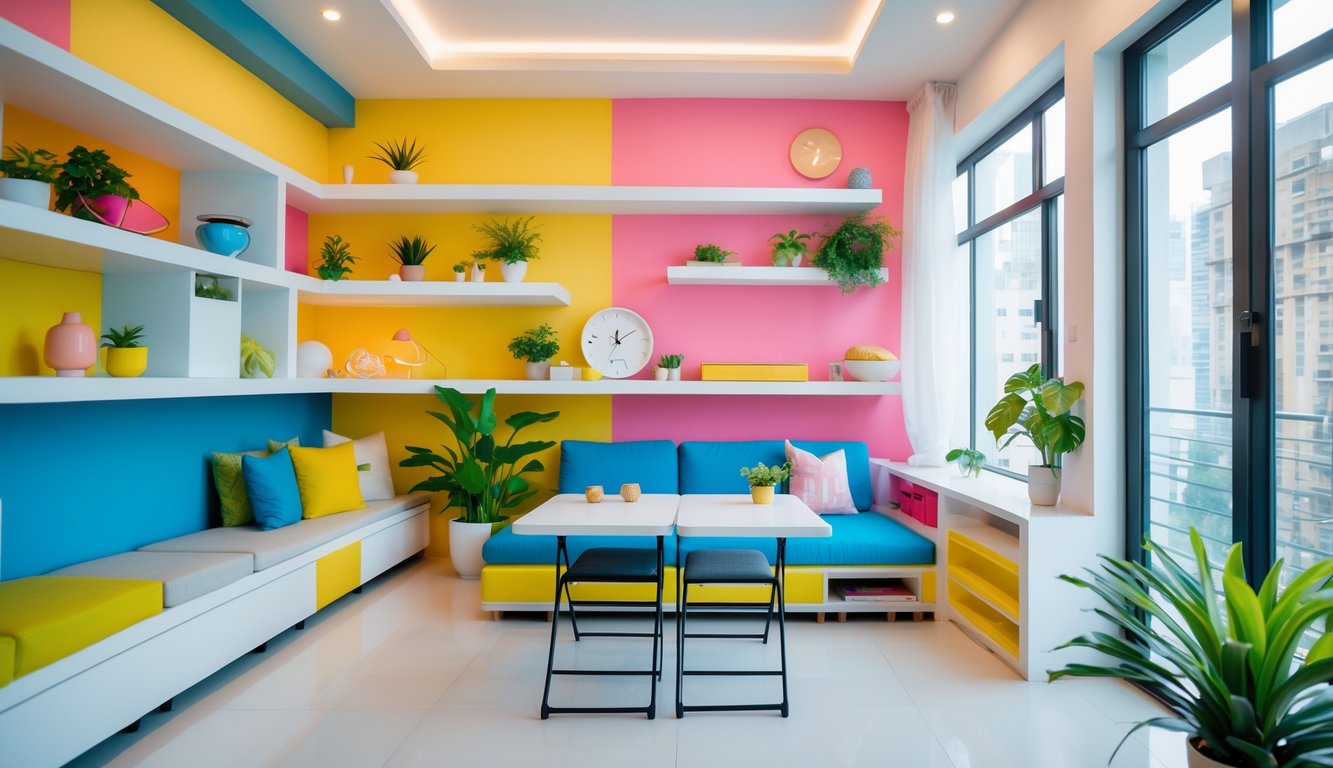
Maximizing Vertical Space for Stylish Spaces
Sick of shoes by the door and a stack of books threatening to topple onto my head? Yeah, me too. Most people ignore their walls, which is wild considering how much junk ends up on the floor. I’ve seen tiny rooms look almost legit—like, “did a professional do this?”—just by stacking stuff higher.
Installing Tall Shelving Units
Once dragged a six-foot IKEA ladder shelf into a client’s apartment (bruised my thumb, landlord glared, worth it). Tall shelves trick your eyes into thinking there’s more space, even if the room is basically a closet. Go for black metal or plain white, whatever, just run them to the ceiling and stash all the random stuff up top.
Anchor your shelves. Not just a suggestion—physics will humble you. CPSC says 30,000 people got hurt by tipping furniture last year. Renters: those tiny wall anchors leave holes you can fill with toothpaste. Modular shelves are a lifesaver for weird corners or radiators. Don’t let anyone tell you a wall’s too awkward.
Creative Corner Shelves
I ignored my kitchen corner for years—just dust and a scowling cat. Finally put up some floating L-shaped shelves (MDF, brackets, nothing fancy). Game changer. Any designer will tell you: empty corners are a crime. I use mine for spices and a Bluetooth speaker—sound bounces, hall feels bigger. Don’t go for perfect symmetry unless you like dusting. Fill the height, stagger the shelves, and suddenly even umbrellas and rogue mail have a home. Threw in a vertical shoe rack once—my friend thought it was custom.
Built-In Shelving as Design Features
People act like built-ins are some luxury feature. They’re not, if you plan ahead and avoid hiring someone who overquotes. I always sneak cable channels behind shelves—clients look at me like I’m nuts, but cords disappear forever. Built-ins give you storage and style in one go. Add cabinet doors at the bottom, and the mess hides itself. I totally stole that from a Restoration Hardware showroom.
My favorite trick: carve out a nook for art books, slap in an LED strip. Architects love to talk about “visual rhythm” and “zones.” They’re not wrong. Even a shallow shelf can hide baskets, toys, or a whiskey bottle if you’re sneaky. Of course, if the wall’s full of pipes, forget it. Nightmare.
Transforming Living Spaces with Bold Projects

Shoved my bookshelf into the hall again, tripped over the vacuum, and realized open floor plans are overrated. Nowhere to hide except under the bed, which, honestly, I’ve considered. Modular spaces aren’t some Pinterest fantasy—if you’ve ever barked your shin on a cube shelf, you know it’s about survival, not style. Who decided sunlight and privacy were mutually exclusive?
Room Dividers for an Open Floor Plan
Last month, I crashed into my “movable” wardrobe divider (read: wobbly death trap). Multi-functional partition units—fold-out shelves, rolling panels—are actually useful, not just Instagram bait. Used IKEA’s KALLAX as a divider in a client’s studio; it split the room without turning it into a maze.
Height matters. Too tall? Feels like a fortress. Too low? Pointless. Tension rods? Don’t bother unless you like 3am surprises. My mentor Anaïs swears by ceiling curtains, but I fell off a chair trying to install one, so hard pass. And yeah, room dividers are dust magnets. No escaping that.
Adding Sliding Doors for Flexibility
I stapled felt to a plywood “sliding door” once—felt clever until I realized I’d measured the whole thing backwards. Sliding doors (glass or frosted polycarbonate) actually work, especially in weird-shaped rooms. Real estate agents love them. Hoch Studio’s Paris apartment used sliding panels to make fake walls—way smarter than building real ones.
Installation? Not scary. Hardware stores sell everything: soft-close tracks, barn door kits, you name it. Measure your opening three times—returns are a nightmare. Most sliding doors are heavy and at least 24″ wide. Don’t let anyone talk you into salvage yard doors unless you like sanding for eternity.
Experimenting with Stripes
Stripes. I painted thick navy ones on my living room wall because some influencer said it’d make the ceiling look higher. Shockingly, it worked, but now it feels a bit like a gym locker room. Apartment Therapy says vertical stripes “expand” rooms, but I’ve seen horizontal stripes make places look fun, not squished. My neighbor’s stripes just made her dizzy.
Masking tape from the dollar store? Never again. Use a laser level or chalk line unless you want to cry. Color matters more than brand—ignore the paint reps. Going monochrome? Try dark stripes on light walls for drama, or the reverse for something chill. Never do stripes over textured wallpaper. Disaster. And someone will always ask if you’re opening a barbershop.



